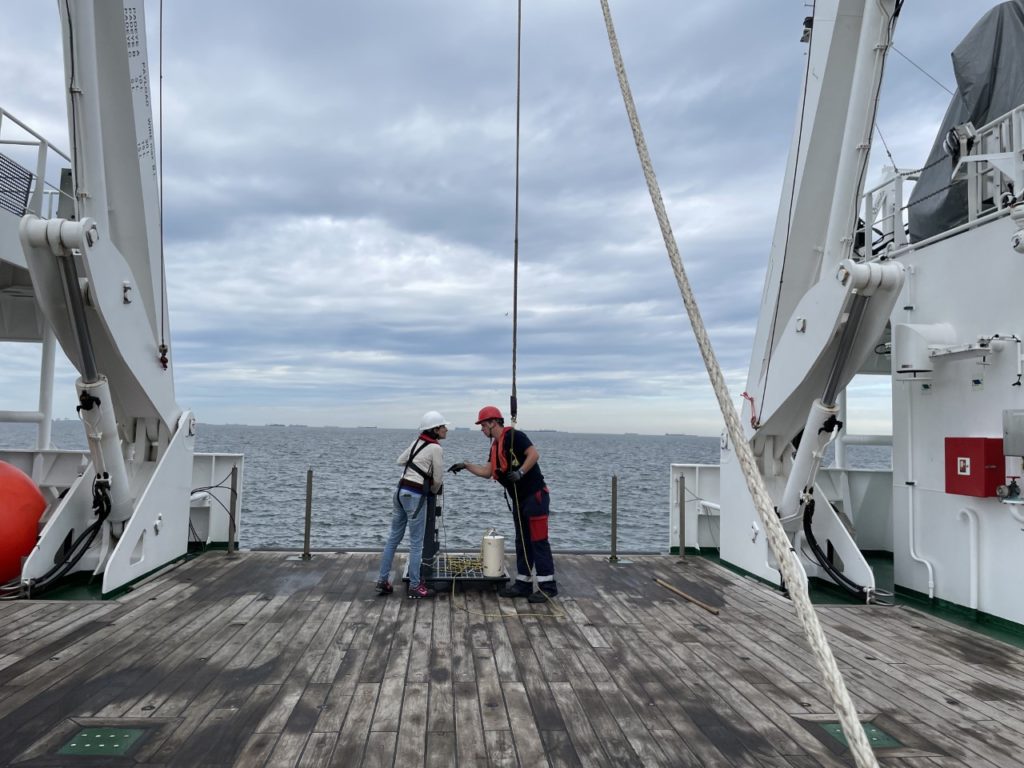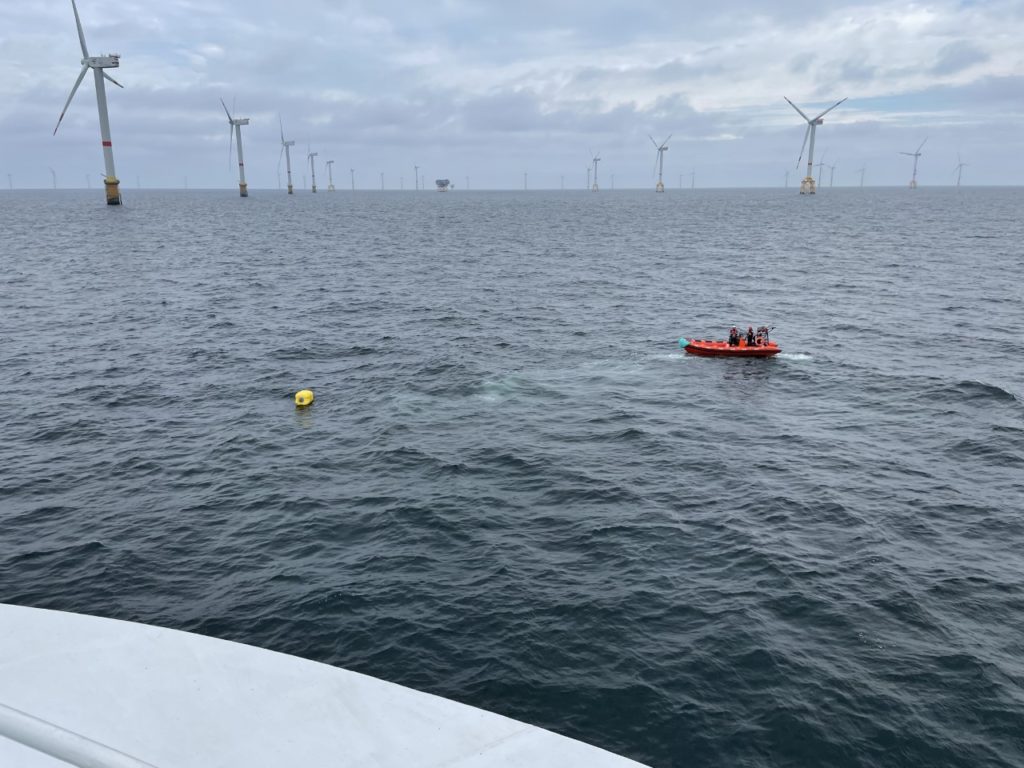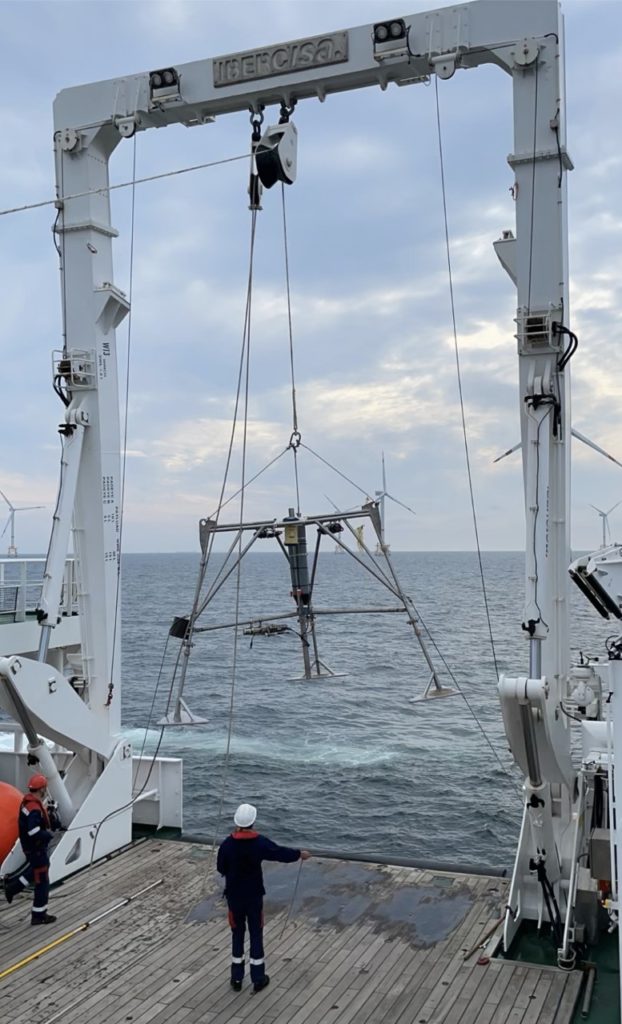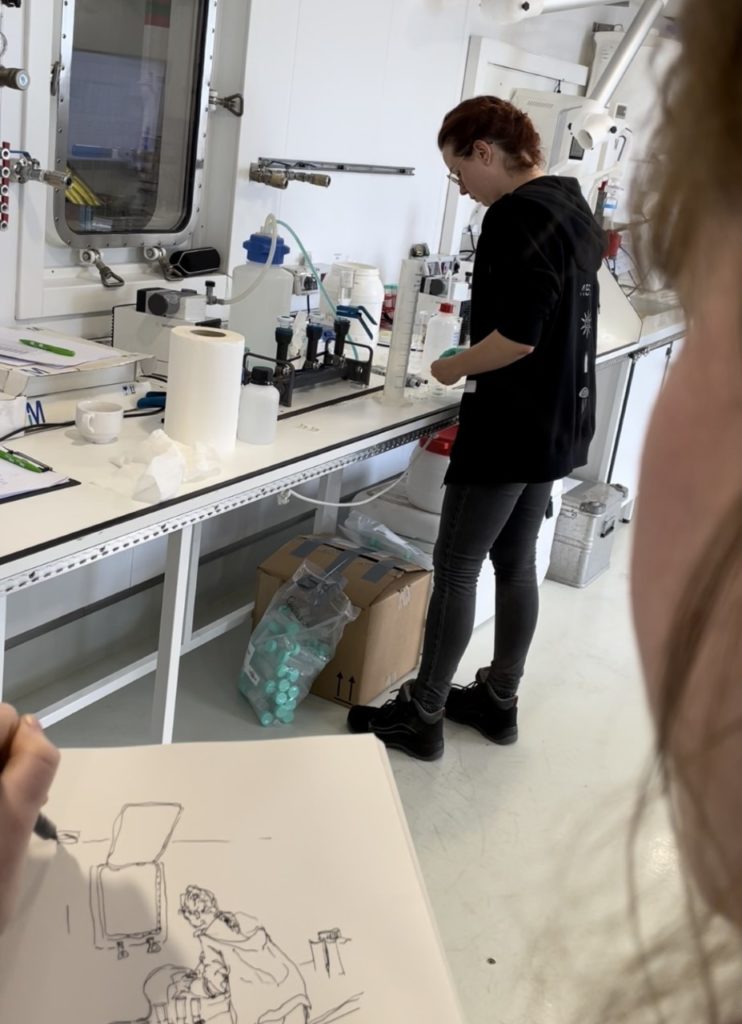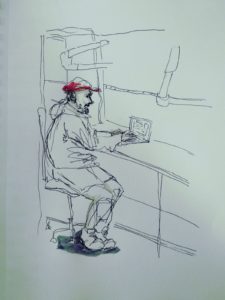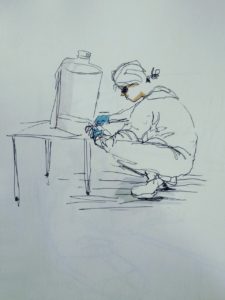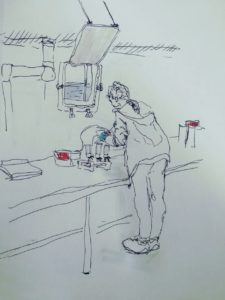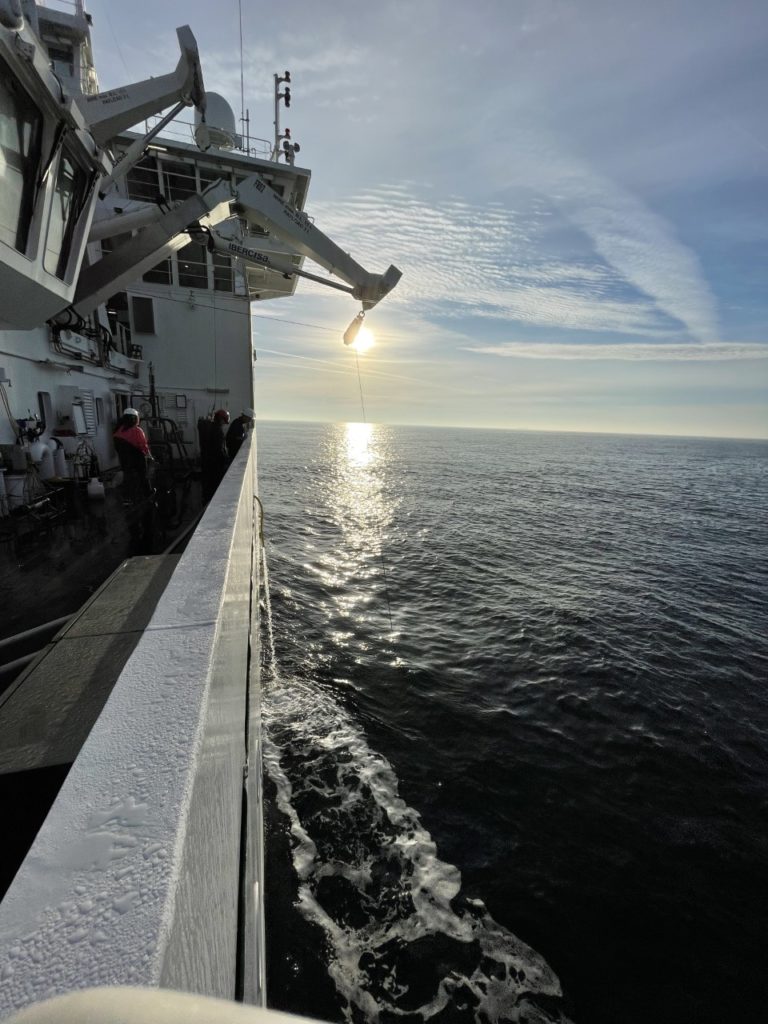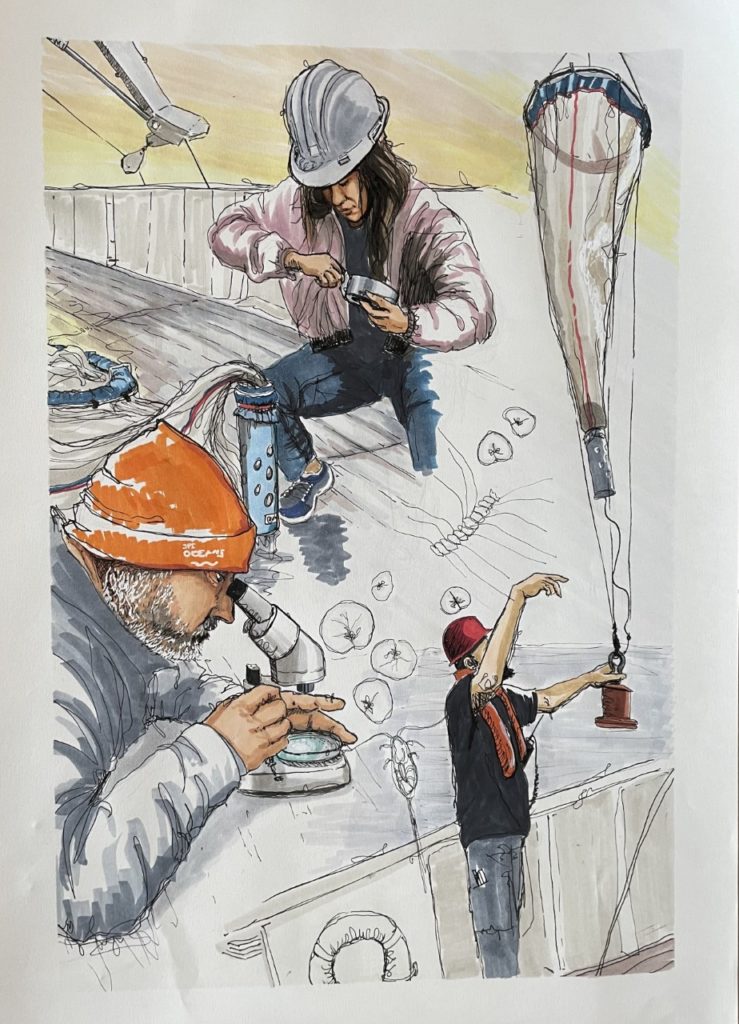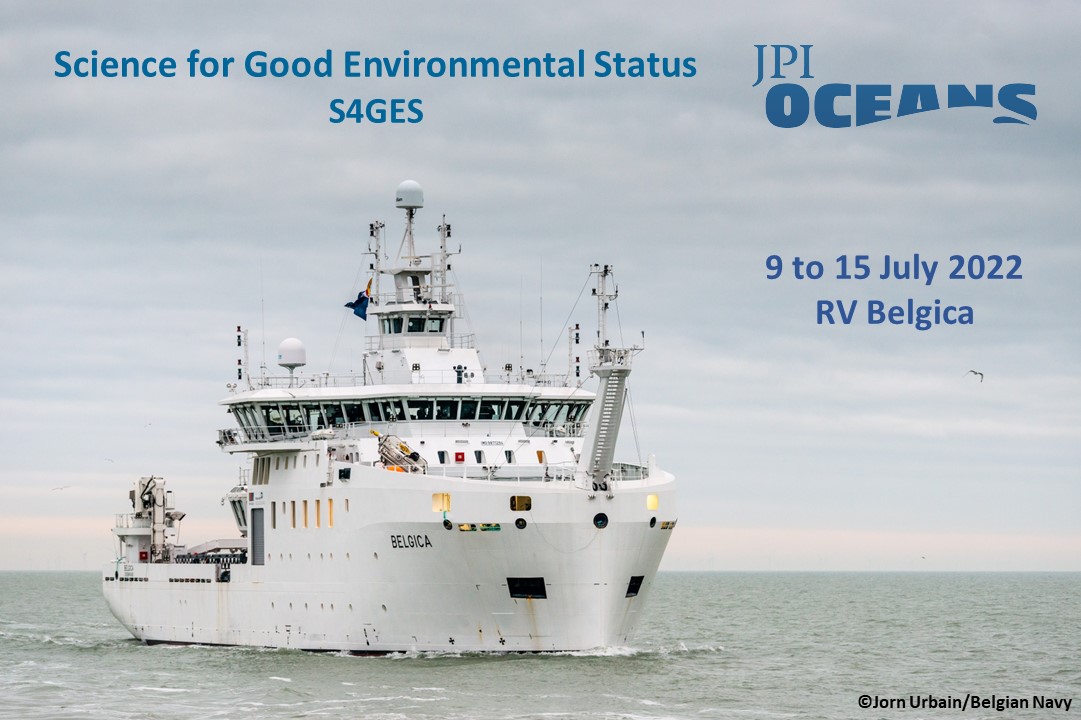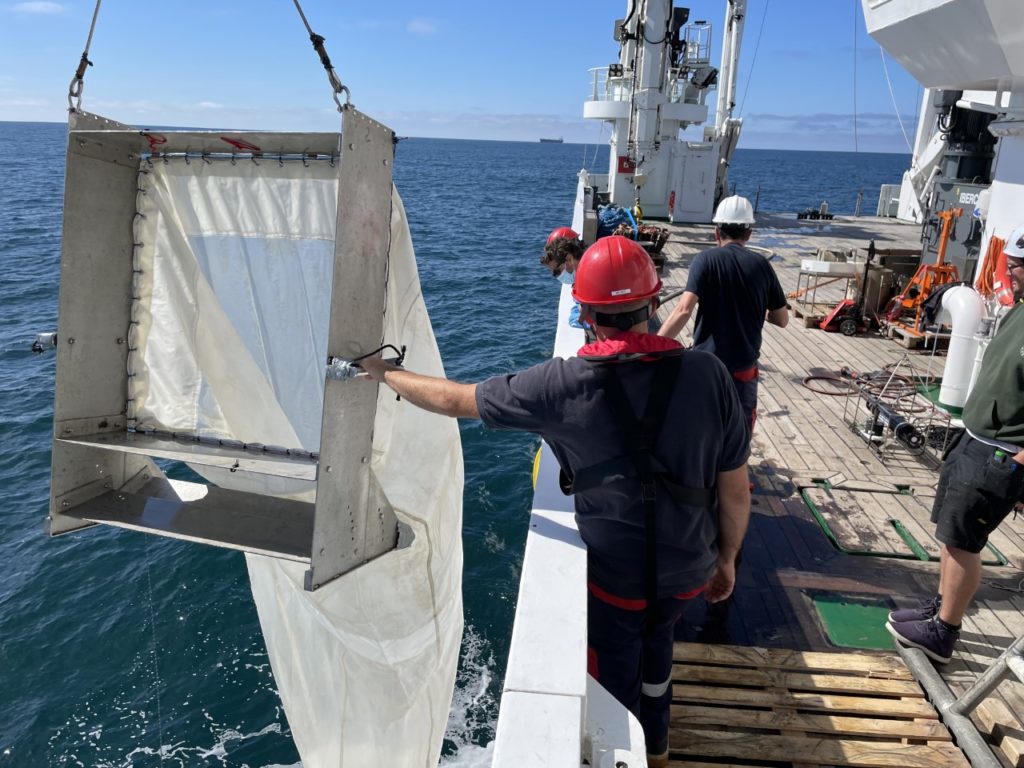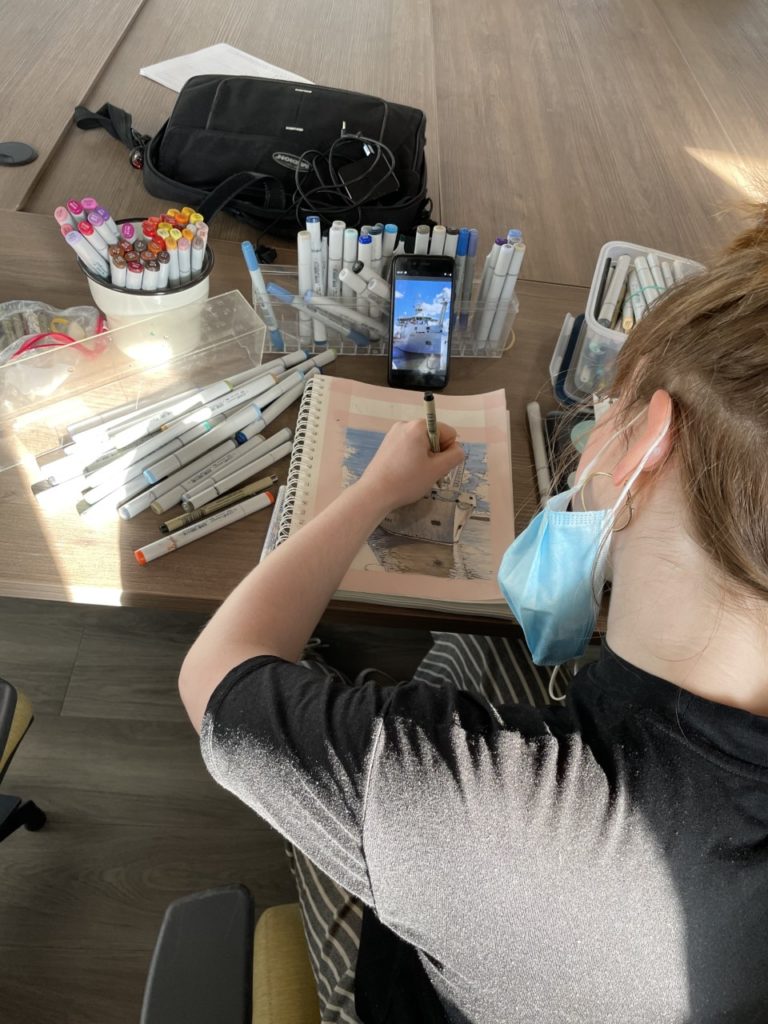Thursday 14 July 2022
Going from shallow to very shallow
Today the S4GES expedition with the RV Belgica moved shoreward. Very high chlorophyll concentration characterizes this coastal environment, which is particularly affected by inland input of nutrients. We completed a transect that cut from the deeper stations yesterday to two shallower sites with accordingly different tidal dynamics, thus exploring all the biogeochemical patterns observed from satellite. Water depths of ca. 15 meters at the day’s first station and less than 10 meters at the second came with its own challenges. At the second station, the ship had only a few meters of water below its keel, requiring attentive navigation. The vertical plankton net that needs a bit of legroom to operate was not deployed here. Nonetheless, the Flemish coast seemed to be so close that we might have had some interested audience from tourists promenading the beach. Heartfelt greetings from the Belgica if you were one of them and googled your way to this blog post!
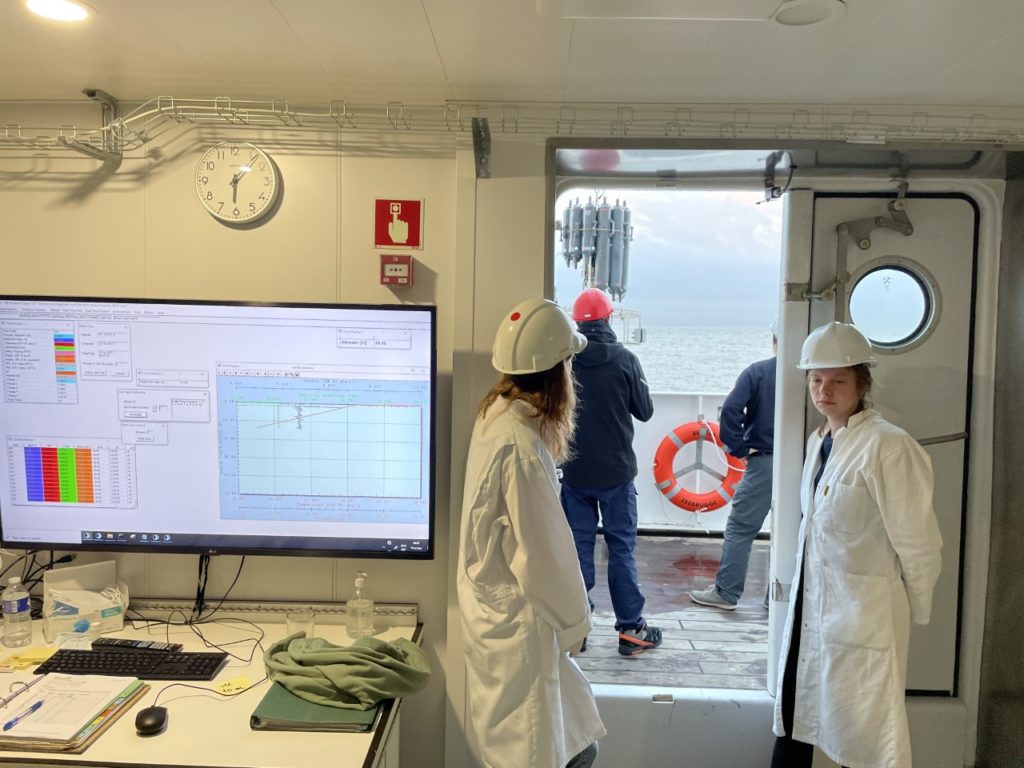
Touching base with heavy gear
A condensed sampling routine during only one velocity minimum of tidal currents per station offered the opportunity to finally sample the sediment also. The massive box corer device was therefore used at both stations. Researchers on board were interested to explore whether they would find ostracods, benthic foraminifera or shells of planktonic foraminifera. Sampling the water column on station is a snapshot of the conditions of that day and hour. Sediments on the other hand have the advantage of being deposited quasi-continuously over years. This makes the sediments a low-pass filtered archive of water column dynamics. So much for the theory. Lab work will reveal whether the sediments contain the desired shells. What the box corer definitively brought on deck was a brittle star, a shrimp and a little fish. All were of course treated with loving care and returned to the water unharmed.

The heart and lungs of the Belgica
Some of the scientific team took the opportunity to descend all the way to the deep level 2 of the ship. This is where the (mostly) unsung heroes and heroines reside – referring to the engines and the crew members that maintain them. Connoisseurs of machine engineering have a lot to see and the regular clueless scientists a lot to marvel at: a monitor-laden control room, three diesel engines to generate electricity, two electric engines for propulsion, four thrusters, a water treatment station, a workshop, and much more. While parts of the engine rooms are obviously really noisy, the whole place is clean and tidy, which might not have been expected to that degree of spotlessness. Not the only surprise down there …
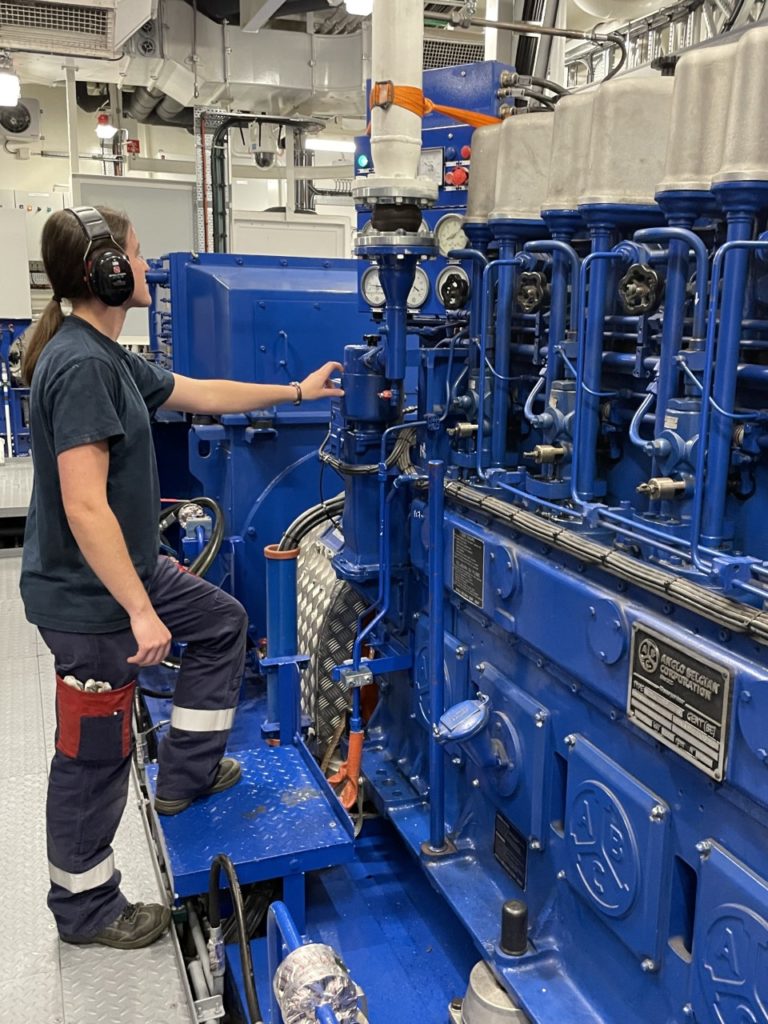
Artist’s delight in an unexpected place
With the Belgica largely held in elegant tones of white and grey, our visual artist Sarah-Marie Kröger had begun to feel a little deprived of colourful motives. She found them rather unexpectedly in the bowels of the ship. The different machines in the engine room are painted in bright blue, red, green, etc. Sarah was thrilled and turned her new-found inspiration immediately into a couple of industrial art pictures à la Belgica.
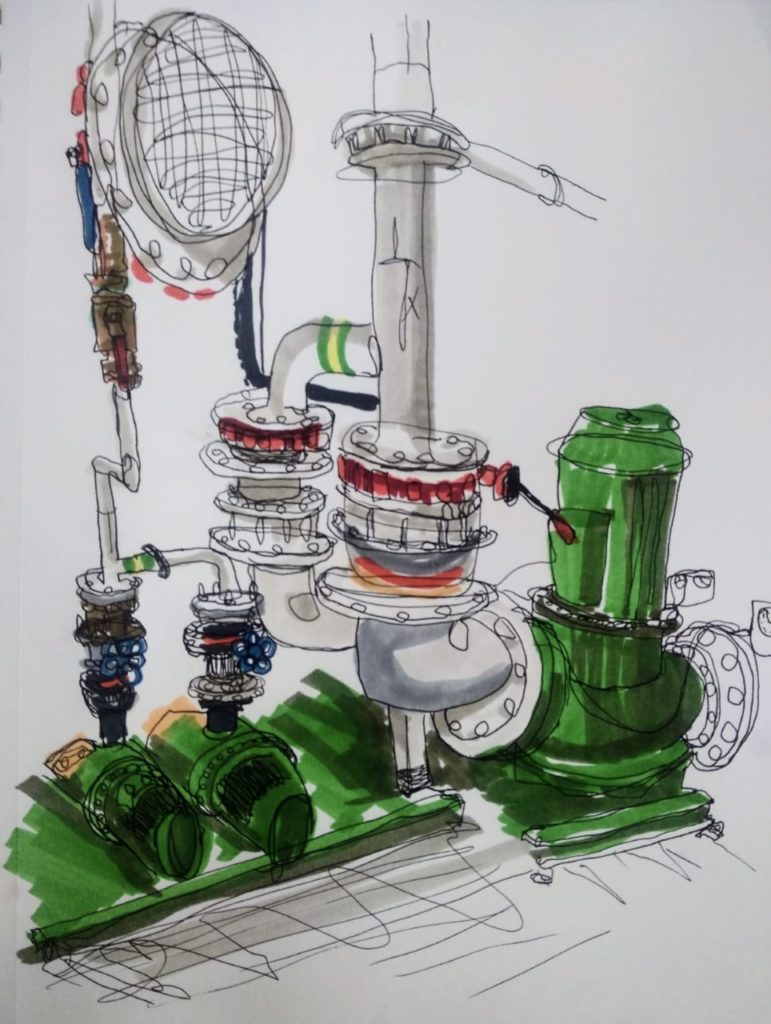
Text by Thorsten Kiefer (JPI Oceans) & Federico Falcini (CNR), Images by Thorsten Kiefer (JPI Oceans)
Other blog posts in this series
S4GES at sea with RV Belgica (part 1)
S4GES at sea with RV Belgica (part 2)

